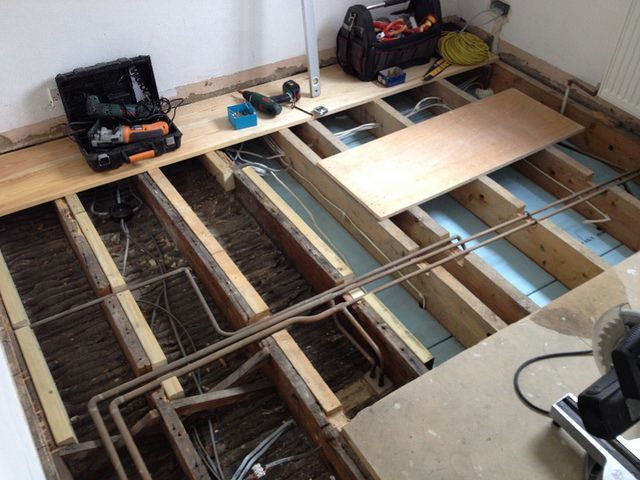When adding or upgrading plumbing in a home, reinforcing floor joists becomes a critical step to ensure the structural integrity of the building. Plumbing fixtures such as bathtubs, showers, and sinks can exert considerable weight and stress on the floor system. In this article, we’ll explore effective methods to reinforce floor joists for plumbing installations, ensuring a stable and durable foundation for your home.
Understanding the Load:
Before embarking on any floor joist reinforcement project, it’s essential to understand the additional load that plumbing fixtures may introduce. Consider the weight of water, appliances, and individuals using the bathroom. This understanding will guide the reinforcement process, ensuring that the floor system can adequately support the added weight without compromising safety.
Assessment of Existing Joist Strength:
Begin by assessing the current condition and strength of the existing floor joists. Determine their size, spacing, and the type of material used. This information will help you identify areas that may require additional support.
Professional Consultation:
Consulting with a structural engineer or a qualified contractor is advisable, especially for extensive plumbing projects. A professional can assess the load-bearing capacity of the existing floor system and provide recommendations tailored to your specific needs.
Add Support Beams:
One effective method for reinforcing floor joists is to install support beams beneath the existing joists. These beams can made of steel or wood and placed perpendicular to the joists, providing additional support across the span of the floor. This method is particularly useful in situations where joists are spaced widely apart.
Install Blocking or Bridging:
Blocking or bridging involves adding perpendicular pieces of lumber between the floor joists. This helps distribute the load more evenly and prevents the joists from twisting or sagging. Blocking is especially beneficial in areas where plumbing fixtures are concentrated.
Use Engineered Wood Products:
Consider using engineered wood products, such as laminated veneer lumber (LVL) or I-joists, which often have greater strength and stability compared to traditional lumber. These materials are engineered to resist warping, twisting, and bowing, providing a more robust support system.
Reinforce Load Points:
Identify load points where plumbing fixtures will installed, such as beneath bathtubs, showers, or large sinks. Reinforce these specific areas by adding additional joists, doubling up on existing joists, or employing sistering techniques, where new joists are attached alongside the existing ones.
Adjust Existing Supports:
In some cases, existing supports, such as columns or piers, may need adjustment or reinforcement to accommodate the increased load. Ensure that these supports are adequately secured to the foundation and provide sufficient support to the floor system.
Consider Steel Reinforcements:
For maximum strength, especially in situations where heavy plumbing fixtures involved, consider steel reinforcements. Steel angle brackets or straps can be strategically placed to enhance the load-bearing capacity of the floor joists.
Check Building Codes:
Always check local building codes and regulations before starting any reinforcement project. Compliance with codes is crucial to ensure the safety and integrity of the structure.
Conclusion:
Reinforcing floor joists for plumbing installations is a critical step in maintaining the structural stability of a home. By understanding the load requirements, assessing existing joist strength, and employing appropriate reinforcement techniques, homeowners can confidently upgrade their plumbing systems without compromising the integrity of their floors. Whether using additional beams, blocking, or engineered wood products, a thoughtful and professional approach to floor joist reinforcement ensures a durable foundation for the evolving needs of a modern home.

